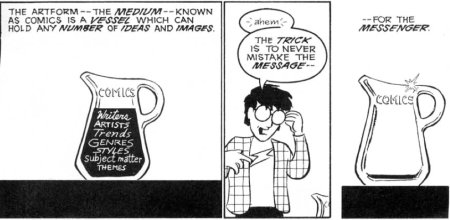These have been some of my favorite selections so far. I found the explicit and over the top subject matter interesting for the fact that these were completely rooted in reality.
Being someone who didn't live through these time periods, my perceptions of the way the specific stereotypical lived then has been fed to me form pop culture references from movies and historical images.
This is why these comics are so interesting; they are coming form the source. I mean, I'm not going to lie, it is very over the top, and I sometimes struggled with what amount of people were actually like this. Well, its more of the question of to what degree was the average intensity of it, and how different was it experiencing this without the internet broadcasting it? I feel like there was a lot more emphasis on actually experiencing things, so these comics were a way to communicate that we were all in the same boat.
ADDITION
These hand drawn comics that were actually available in a physical entity yet considered underground just make them seem so unbelievable to me. It is the complete opposite now in todays age, you know you have hit mainstream when it exists and is distributed physically, besides the inkjet printouts you did yourself in your dorm room.
I really though enjoyed the honesty in some of the shroom trip scenes through the comparison of what the trip experience was, to what the person looks like in real life. I admire this humor, and it gives me insight to the perceptions of the way this counter culture viewed themselves.
I liked the extreme probability of these trip scenes being inspired by real ones as well.
